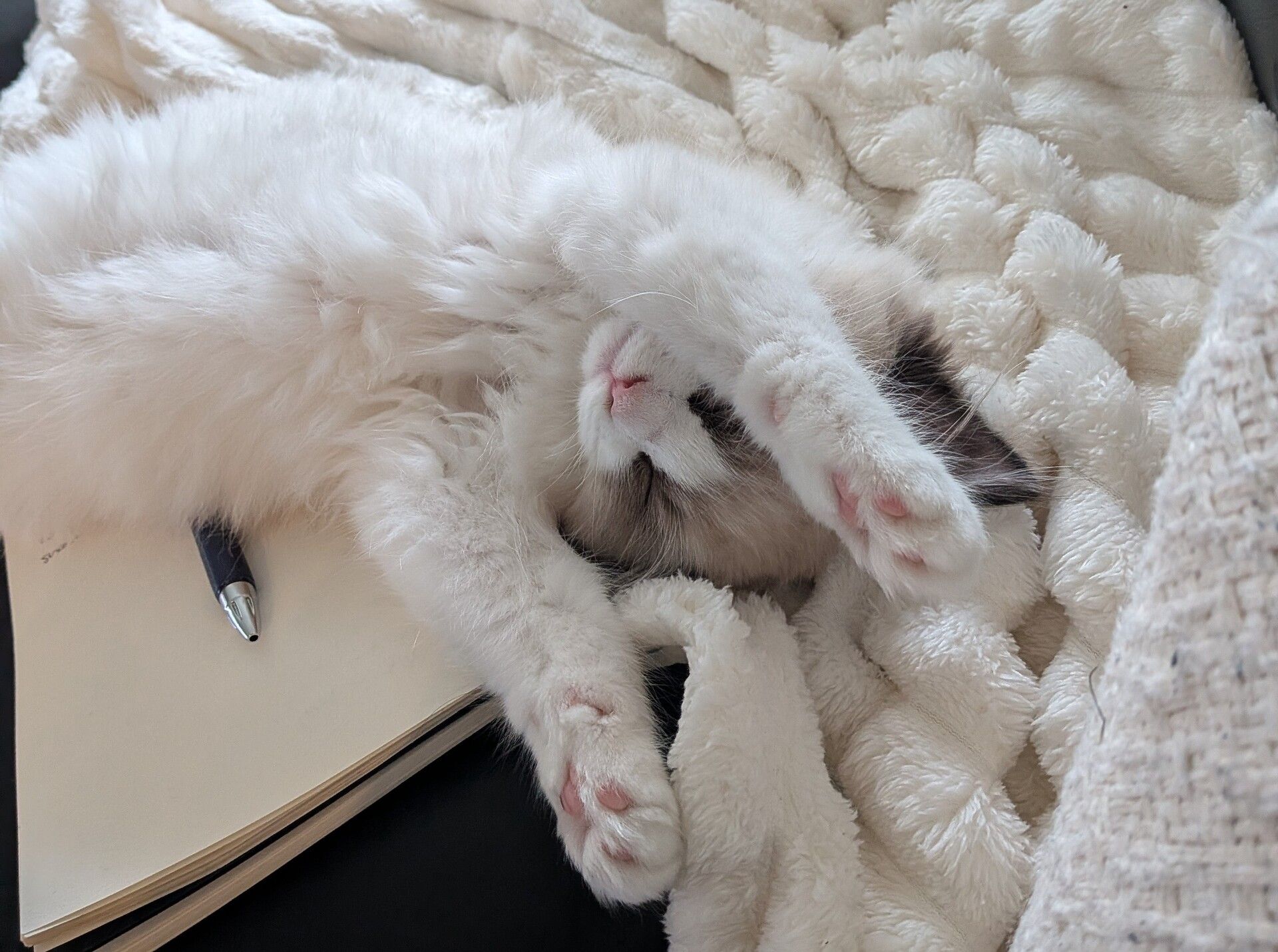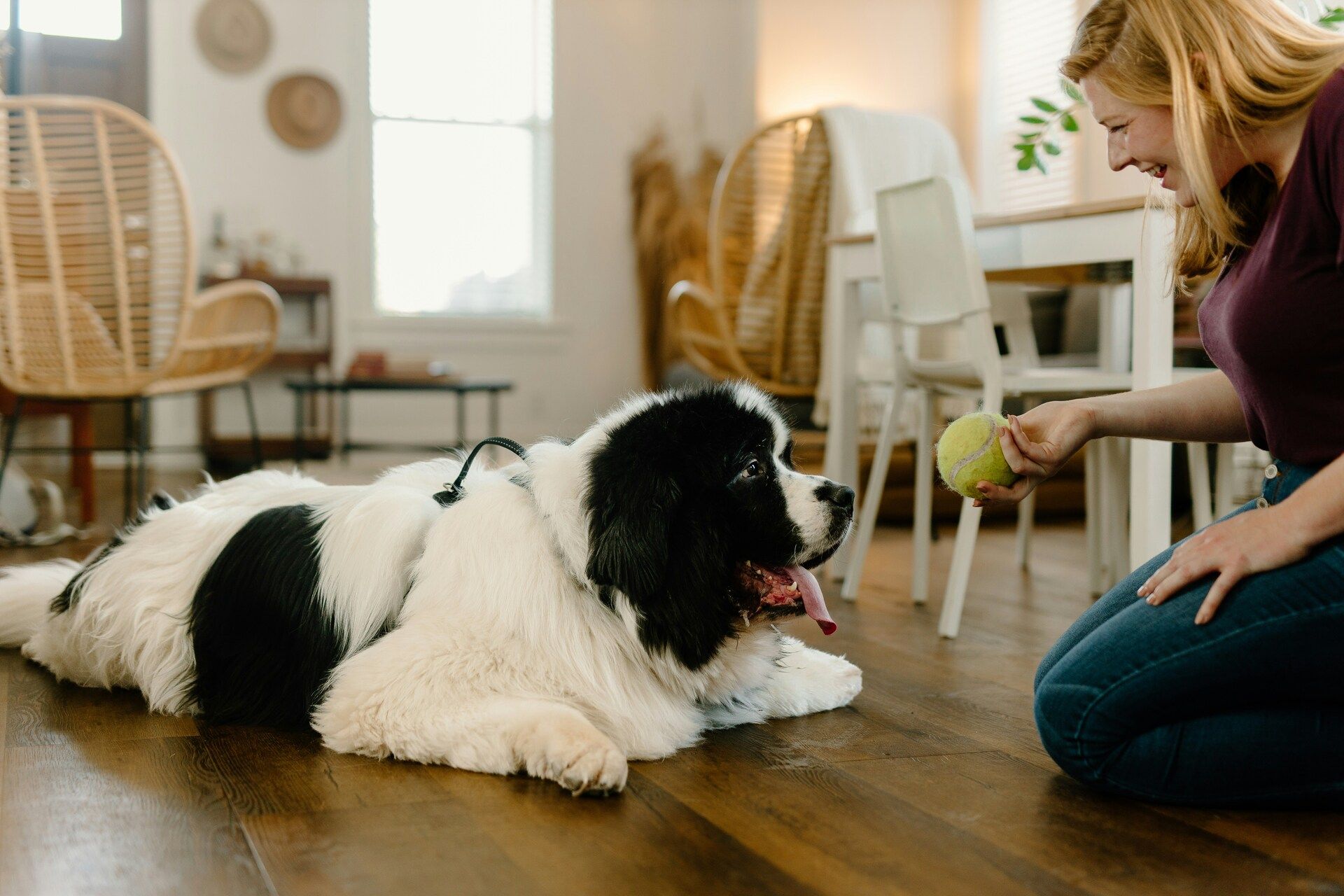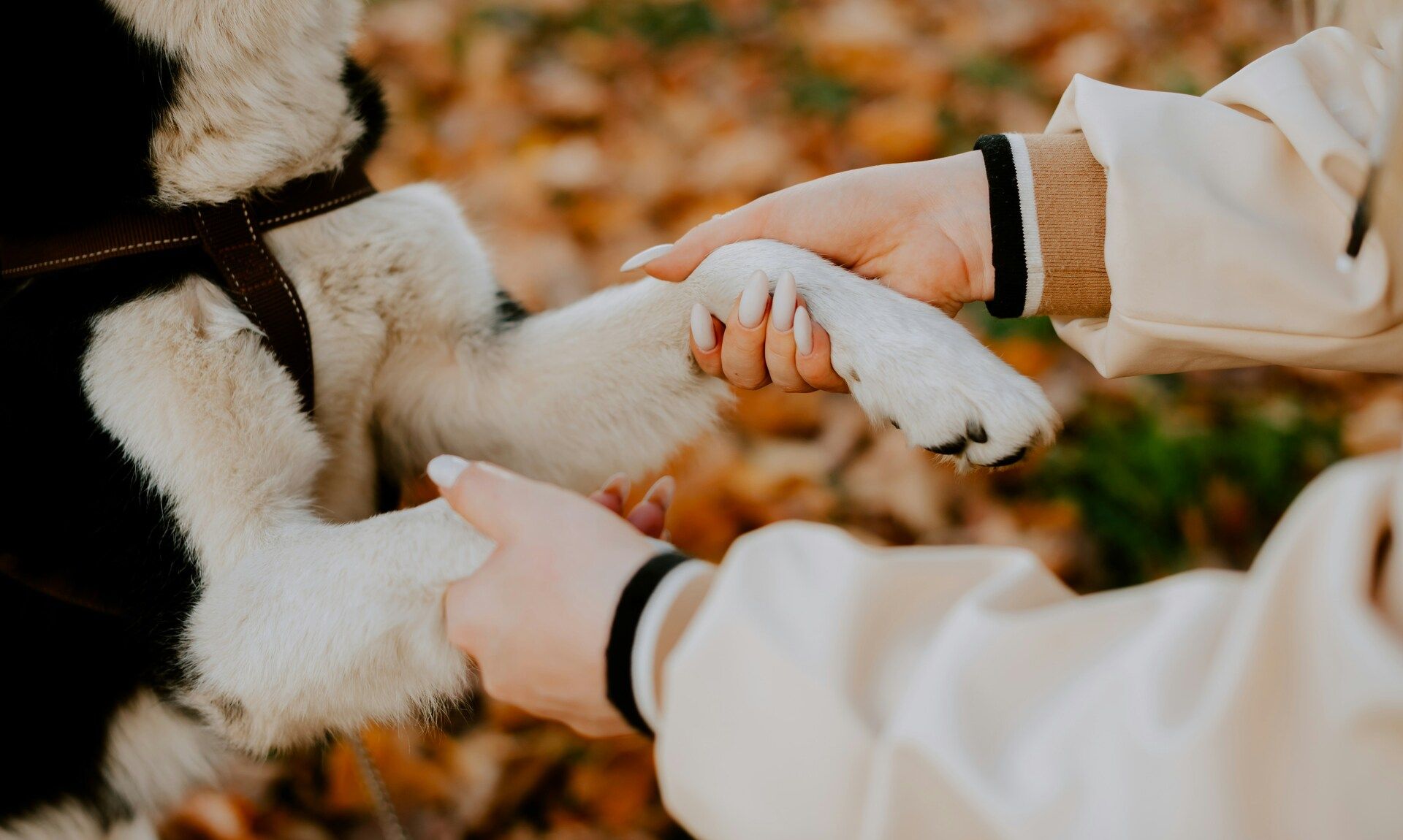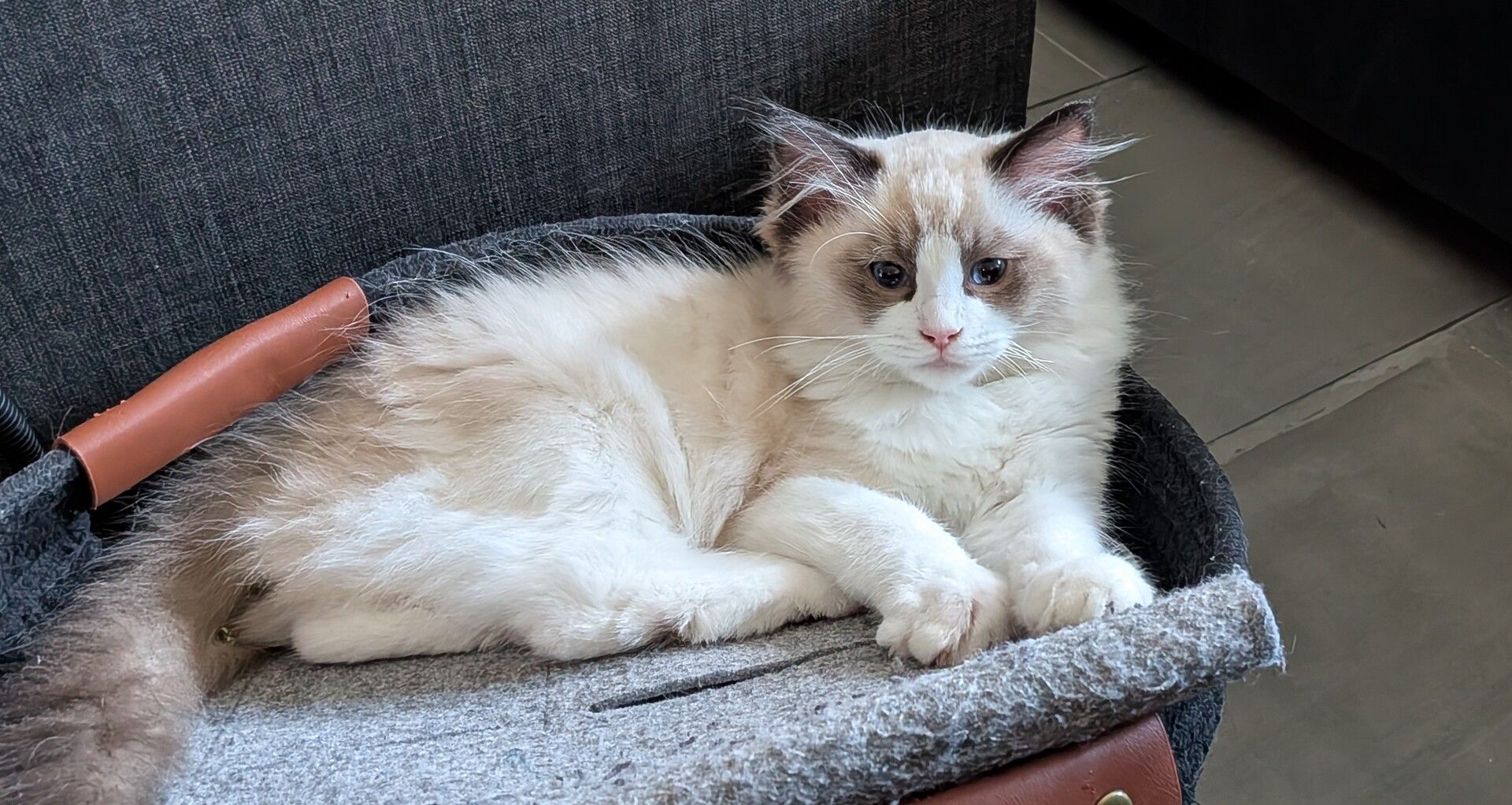Dear Friends -
Last week I welcomed a new kitten into my home. It’s only been a week, but the change has already been real: the mood lighter, energy more playful, a sense of purpose and connection I hadn’t anticipated. It reminded me of watching my parents bring home a Cavalier King Charles Spaniel puppy when they entered retirement. That dog became a daily dose of delight for them.
It got me thinking: if adding a pet can shift things so positively at any life stage, then especially in the third act—when routines change, children might be grown, transitions loom—it might be a smart strategy to consider. For many of us, it’s not just about having a pet. It’s about how that companion can support a richer, more meaningful next chapter.
If you’re already a pet-owner, you know the joy and the comfort. If you’re not (yet), this week’s newsletter is an encouragement to consider it — and to see how you can do it in a way that supports your lifestyle, not limits it.
Join over 4 million Americans who start their day with 1440 – your daily digest for unbiased, fact-centric news. From politics to sports, we cover it all by analyzing over 100 sources. Our concise, 5-minute read lands in your inbox each morning at no cost. Experience news without the noise; let 1440 help you make up your own mind. Sign up now and invite your friends and family to be part of the informed.

Meet Oliver Gray. He is SUCH a joy.
The research: what pets bring later in life
Here are some of the well-documented advantages of bringing a pet into your life as you age (or as you enter that third act):
1. Health boosts — physical, emotional & cognitive
Pets help increase opportunities for physical activity and outdoor time. For example, dog‐walking or just engaging in play/grooming with a cat helps shift you out of a sedentary pattern.
Having a companion animal is associated with lower blood pressure, lower cholesterol/triglycerides, and improved cardiovascular markers.
Pets also aid emotional health: reduced loneliness, less depression & anxiety, more sense of purpose and routine.
Importantly: there is research showing that pet ownership is associated with slower decline in physical functioning among older adults.
Emerging data show that owning a cat or dog may help slow cognitive decline (memory, verbal fluency) in older adults.
In short: pets aren’t just fun—they really can anchor more vitality, connection, and meaning as we age.
Many folks in the third act find the transition tricky: children move away, retirement means no more work structure, social rhythms change. A pet offers a reliable presence, something to care for, someone who cares for you in return.
Pets provide daily reasons to get up, get outside (even if just to play), interact (with neighbors, fellow dog‐walkers, other pet owners), which reinforces community.
They provide emotional affirmation: you’re needed, you’re relevant, you matter. That sense of responsibility and connection is hugely valuable in any life stage, especially when identity is shifting.
3. Lifestyle alignment and joy
The fun part: pets bring spontaneity, delight, a kind of “everyday joy” that’s easy to underestimate. A cat’s antics, a dog’s greeting, the simple ritual of feeding or grooming can plug you into moments of presence.
They can help anchor new routines, give structure (walks, playtime, check-ups) that support momentum rather than drift.

Addressing Objections — “Yes, but…”
Of course, adopting a pet isn’t a no-brainer—it needs realistic thinking. Here are common objections, with ways to reframe or address them.
Objection 1: “It’ll limit my travel / mobility.”
Valid. If you like to travel frequently, the idea of a pet can seem like a constraint. But there are several options:
Arrange trusted care networks ahead of time (friends, family, pet sitters) so you’re comfortable leaving the pet when you travel. (Side note: I’m socializing my new kitten with my friend’s dachshund so when I go travel the cat is familiar with their dog and environment.)
Choose a pet that’s less demanding of constant supervision (depending on your style): for example, a cat vs. a hyper high‐energy dog, or a more independent dog breed with a reliable routine.
Use travel as a reason to deepen your social network: connecting with pet‐sitters, pet‐friendly accommodations or networks can expand your community rather than restrict it.
Consider “mini‐pet” models (short-term fosters, part-time pet responsibilities) if you travel heavily, or build in travel seasons vs. stay-at-home seasons.
Objection 2: “What about cost / vet bills / unplanned health issues?”
Again, valid. Pet ownership has financial and time commitments. But:
Budget for routine care (vaccines, checkups) and plan a little buffer for unexpected costs.
Choose a pet whose expected maintenance aligns with your budget & energy. Older animals or smaller/less active breeds can cost less in some scenarios.
Consider pet insurance or wellness plans if your budget allows.
Weigh the cost vs. the benefits: many studies show improved health and reduced doctor visits for pet owners, which may offset some cost.
Objection 3: “What if my health declines / I move / lifestyle changes?”
Smart to plan:
Select a pet with flexibility in mind: a companion cat or older dog rather than a puppy with massive demands.
Build a “plan B” for the pet: such as a trusted friend/family member or pet care network who can step in if your circumstances change.
Consider pet size, access (stairs, mobility) when choosing the animal so the fit remains good even if you slow down.
Remember: age doesn’t necessarily mean “less capable”—many older adults are very active and pets support that activity rather than hinder it.
Objection 4: “I don’t want the pet to depend on me completely.”
That’s fair and thoughtful. Some ways to frame it:
View the pet as a companion with you, not just for you. Your life and theirs integrate, but don’t feel like one is solely reliant on you.
Create shared routines that are manageable and agreeable for you both.
Consider the pet’s temperament and care needs when you adopt so the match is realistic.
Embrace the “mutual benefit” mindset: you gain from caring, they gain from being loved and safe. It’s a two-way street.

Tips for choosing and welcoming a pet in your third act
Here are a few practical pointers:
Match your energy and lifestyle: If you are very mobile and want active companionship, a dog (with walks) may be fantastic. If you prefer lower maintenance, a cat (or older dog) may fit better.
Consider adoption vs. breeder: Many older pets or “senior dog” adoptions are deeply rewarding — you give a great quality of life in their later years and often their demands are lower.
If you choose a breeder, choose wisely: A reputable breeder prioritizes the health and temperament of their animals, performs genetic and health screenings, and raises pets in clean, socialized environments. This route can make sense if you have allergies, want a particular size or energy level, or are looking for a predictable temperament that fits your lifestyle. Avoid pet stores and online “puppy mills,” and always ask to visit in person, meet the parents, and review health records.
Create routines from day one: The more you build predictable routines (feeding, play, checkups), the more the pet anchors your everyday life.
Plan for travel / breaks: Identify your “pet care community” in advance (friends, pet sitters, family) and perhaps do a trial leave to see how it works.
Consider your living situation: If you rent, ensure you’re ok with any pet restrictions; if you have stairs or mobility concerns, choose breed/size accordingly.
Budget & health planning: Set aside a small emergency fund for the pet; choose a vet you trust early; consider wellness checkups.
Visit first, adopt thoughtfully: Spend time with potential pets, see how they fit your vibe, mix of energy, temperament.
View this as an investment in your “third act vitality”: It’s not just about caring for something else—it’s about how the pet can care for you, in ways big and small.

One more of my sweet Oliver!
Why this matters for your third act
Your third act is a chance to recalibrate: what matters, how you spend your time, who you spend it with. A pet can amplify that opportunity in three ways:
Renewed energy & engagement
A pet invites movement (even gentle), invites presence, invites delight. Whether you’re taking a cat-nap together, walking the dog, playing with a kitten, the creature asks for your attention and gives it back. It’s a catalyst for more “life in your life”.A meaningful “role” that evolves
When work, parenting, or other big roles fade, we sometimes wonder: “What now?” Being a caregiver (even lightly) gives you a role, a purpose. It doesn’t replace your life’s story—it augments it.Connection and joy that anchor transitions
Third act life often brings transitions: kids grown, friends moving, new rhythms. A pet is a steady companion through that. It connects you to present moments and gives you something to share—stories, companionship, laughter.
Closing invitation
If you already have a furry (or feathered) friend, I hope this simply affirms what you’ve experienced and gives you a few new framing points you can share. If you haven’t yet taken the step, consider this your gentle nudge: look into what pet might fit you in the next chapter of your life.
Your next act can be richer, more grounded, more joyful—and a pet might just be one of those deceptively small changes that makes a big difference.
Feel free to hit reply and let me know: have you ever considered getting a pet at this stage of life? What concerns do you have? If you already have one, how has your life changed with their presence?
Wishing you warm companionship and deliberate joy in whatever form your next chapter takes.
Cara Gray
Third Act Consultant, CPRC, CEPA™️
P.S.S. If you want to start planning your third act, set up a time on my calendar for a chat: Schedule a Chat with Cara



